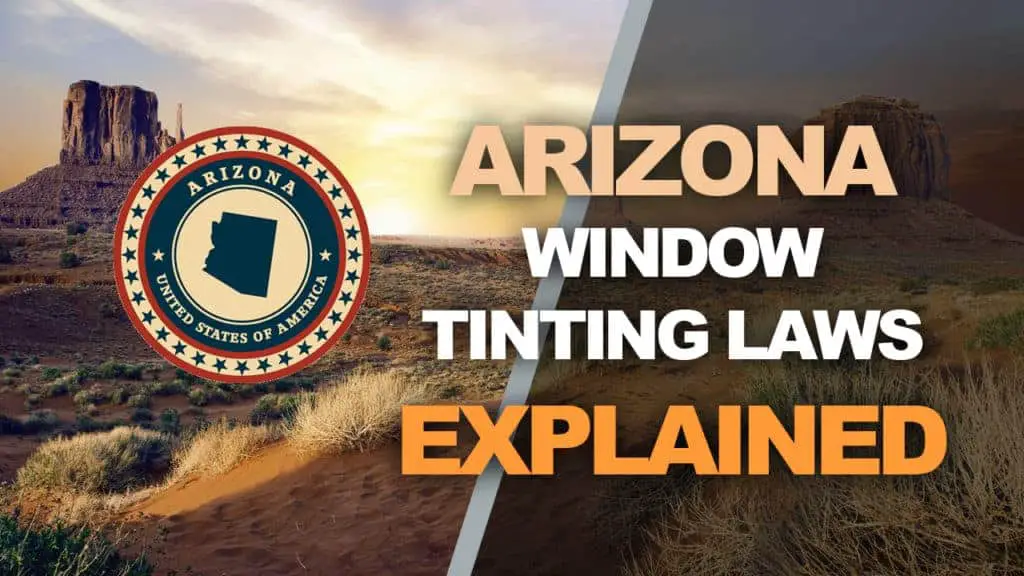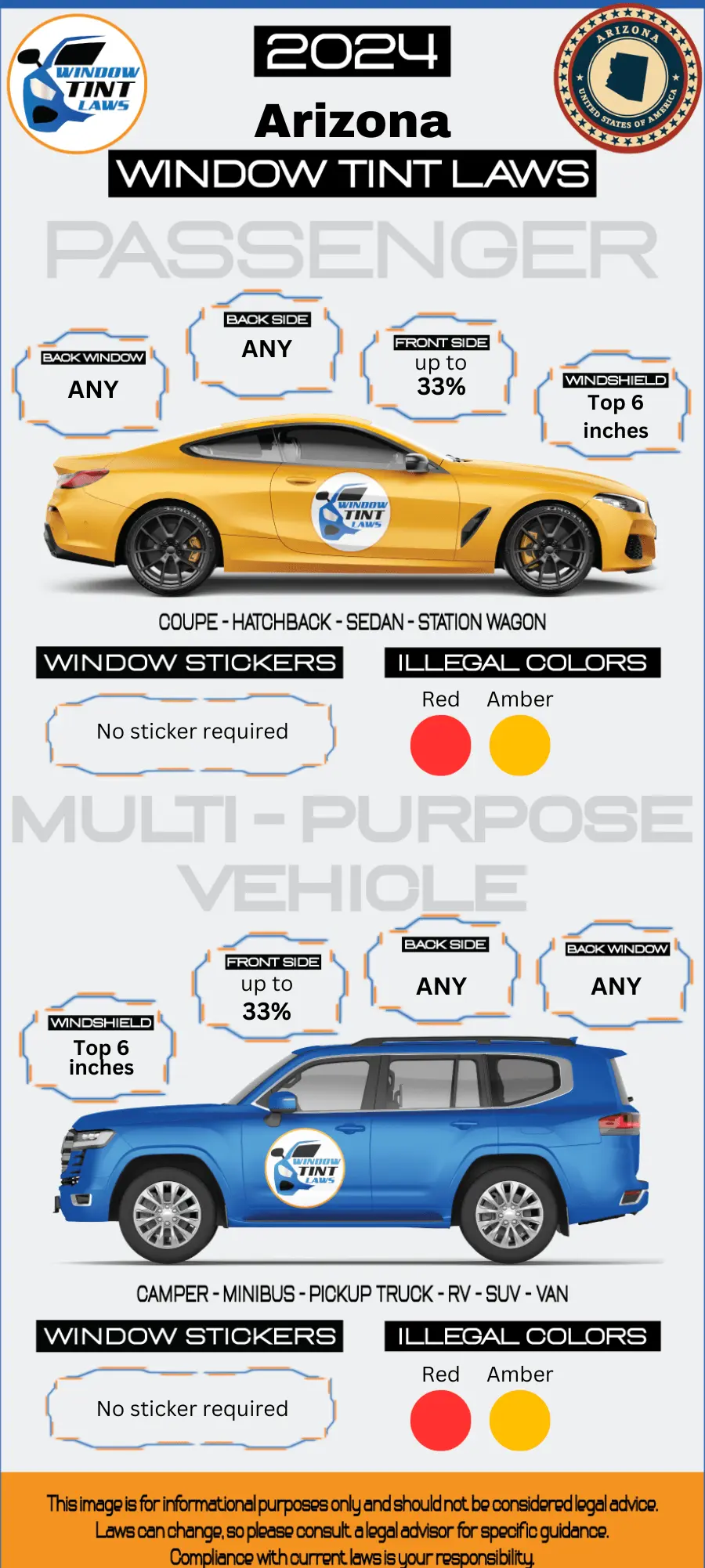
Arizona Tint Laws – 2024 Updated Legal Tint Limit
Please note that Arizona Legal Tint Regulations can change daily and may be interpreted differently at the city or county level. We recommend verifying this information with your local DMV or law enforcement agencies. We have manually fact-checked this content using official state resources. Arizona enacted tinting laws in 1994. If any information provided is incorrect or outdated, please contact us so we can make the necessary corrections. Thank you.
2024 Arizona Tint Laws – Legal Tint Limit For Passenger Vehicles
- Front Windshield: Non-reflective tint is allowed above the manufacturer’s AS-1 line. No tint is permitted below the AS-1 line.
- Front seat side windows: up to 33% tint darkness allowed. Must allow at least 33% of light transmission. This means tint can block up to 67% of light.
- Back seat side windows: Any tint darkness can be used. Any darkness or tint is allowed. No minimum light transmission is required.
- Rear window: Any tint darkness can be used. Any darkness or tint is allowed. No minimum light transmission is required.
2024 Arizona Tint Laws – Legal Tint Limit For Multi-Purpose Vehicles
- Front Windshield: Non-reflective tint is allowed above the manufacturer’s AS-1 line.
- Front seat side windows: up to 33% tint darkness allowed
- Back seat side windows: Any tint darkness can be used
- Rear window: Any tint darkness can be used

- Medical exemptions are allowed in Arizona. To get a window tinting exemption you will need a doctor’s prescription.
- Arizona tint laws prohibits reflective or metallic tint films on any of the windows.
- Violating the tint laws in Arizona is a civil traffic violation with a fine up to $185.
- Local regulations may further restrict the state of Arizona legal tint limit, so some Arizona cities or counties may have additional limitations.
What does VLT Mean according to Arizona Tint Laws?
- Window tint film’s light transmission is measured as VLT (Visible Light Transmission) and each state has its own legal limits for VLT on car windows.
- A HIGHER VLT means that more light is allowed to pass through the window tint film.
- Example: a 75% tint will allow 75% of the light to pass through whereas a 5% tint will only allow 5% of the light to pass through, making the 5% tint a much darker film.
- Arizona’s window tint law has specific VLT limits for Passenger Vehicles and Multi-Purpose Vehicles.
FAQ’s Regarding Arizona Tint Laws and Arizona Legal Tint Limit
Can you tint windshield in AZ?
In Arizona, you can tint your windshield, but there are specific regulations you must follow. The tint must be non-reflective and can only be applied above the manufacturer’s AS-1 line or the top six inches of the windshield.
Can you get pulled over for tint in Arizona?
Yes, you can be pulled over for having car window tinting that does not comply with Arizona’s legal standards, which include specific limits on tint darkness and reflectivity for different windows of the vehicle.
How much is an illegal tint ticket in Arizona?
In Arizona, violating the window tint laws is considered a civil traffic violation, and it can result in a fine of up to $185.
Do I have to have side mirrors in Arizona?
According to Arizona tint laws, if your vehicle’s rear window is tinted or obstructed in any way that restricts the driver’s clear view of the rear, you are required to have both a left and right side mirror. If the rear window is clear, only the left side mirror is legally required.
How do I get a Tint Exemption in Arizona?
Arizona State Law allows window tint medical exemptions to be given to vehicle owners or passengers who regularly drive with the vehicle owner. To file for a medical exemption in Arizona you will need a letter stating the medical necessity for darker window tints that is signed by a licensed physician.
This signed letter needs to be sent to the Medical Review Program in the Arizona Department of Transportation along with the registration for every vehicle that will need to be tinted. You must submit a copy of the vehicle registration and a letter from your physician, stating the medical reason for the request. The information submitted must include your name and license number. This Medical exemption does not include the front windshield of the vehicle.
For more information regarding window tint medical exemptions in Arizona, you can check this resource:

